Last Tuesday, my 8-year-old asked for "the orange chicken but better". That's exactly what this calamansi chicken is. I've been making this recipe for years whenever I need something quick but special enough that the whole family gets excited. The kids love the crispy coating and sweet-tangy sauce, while I love that it takes just 40 minutes from start to finish.
What makes this different from regular orange chicken is the fresh calamansi juice, it gives this bright, floral citrus flavor that's way more interesting than plain orange. Plus, everything gets coated in this glossy, restaurant-style sauce that makes even the pickiest eaters clean their plates.
Jump to:
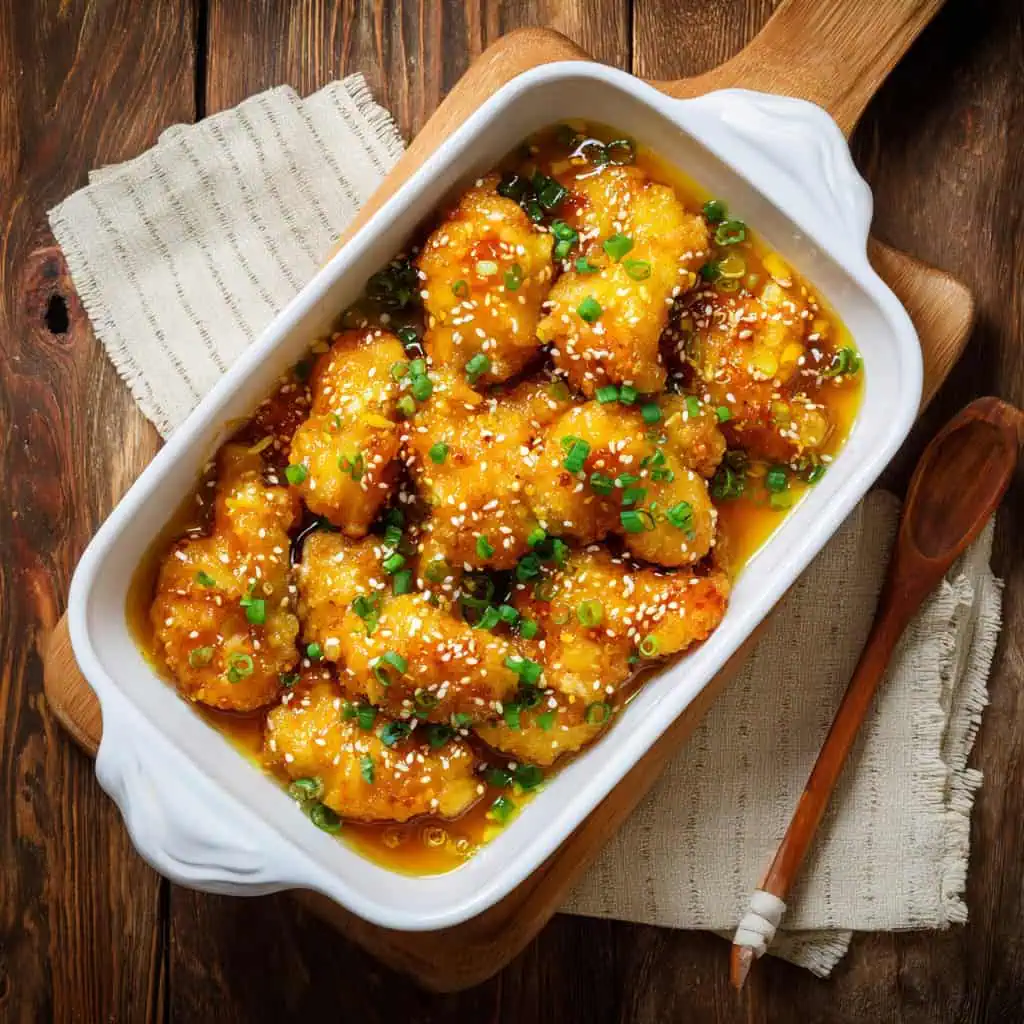
Why You'll Love This Recipe
This calamansi chicken brings together the best of Filipino and Chinese flavors in one incredible dish. The crispy, golden chicken pieces are perfectly tender inside while the sweet and tangy calamansi sauce adds a refreshing citrus twist that's absolutely addictive.
Unlike heavy takeout versions, this homemade recipe uses fresh calamansi juice that brightens every bite. It's quick enough for weeknight dinners but impressive enough for special occasions, and the whole family will be asking for seconds!
Ingredients
- 1 pound boneless skinless chicken thighs, cut into 1-inch cubes
- 2 tablespoons light soy sauce
- 1 tablespoon Chinese cooking wine
- 2 egg whites
- 1 tablespoon cornstarch
- Canola oil for deep frying
- Sesame seeds, toasted
- Green onions, chopped
For the Calamansi Sauce:
- ½ cup fresh calamansi juice
- 2 tablespoons light soy sauce
- 1 tablespoon Chinese cooking wine
- 1 teaspoon sesame oil
- ¼ cup brown sugar
- 2 cloves garlic, peeled and finely minced
- 1 thumb-size ginger, peeled and finely grated
- ½ teaspoon red chili flakes
- 1 tablespoon cornstarch
- ¼ cup water
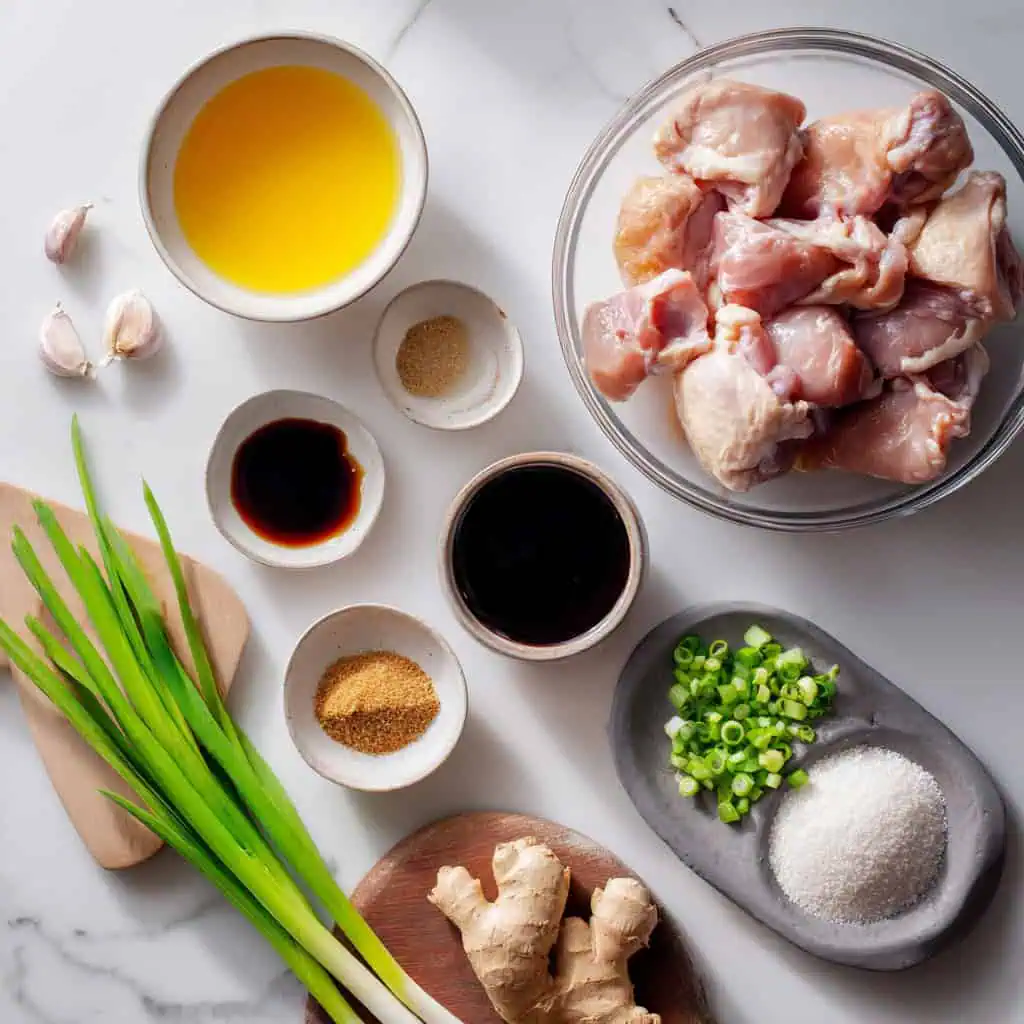
These ingredients create the perfect balance of flavors and textures. Chicken thighs stay juicier than breasts while the egg white and cornstarch coating creates that signature crispy exterior. Fresh calamansi juice is the star, providing a unique citrus flavor that's more complex than regular orange juice.
The combination of soy sauce, brown sugar, and aromatics builds layers of sweet, salty, and savory notes that make this dish irresistible.
Equipment
- Deep heavy-bottomed pan - For even heat distribution during frying and prevents oil temperature fluctuations
- Wire rack - Allows excess oil to drain properly, keeping chicken crispy
- Slotted spoon - Safely removes chicken pieces from hot oil without splashing
- Mixing bowls - For marinating chicken and preparing sauce components
- Whisk - Creates smooth, lump-free sauce consistency
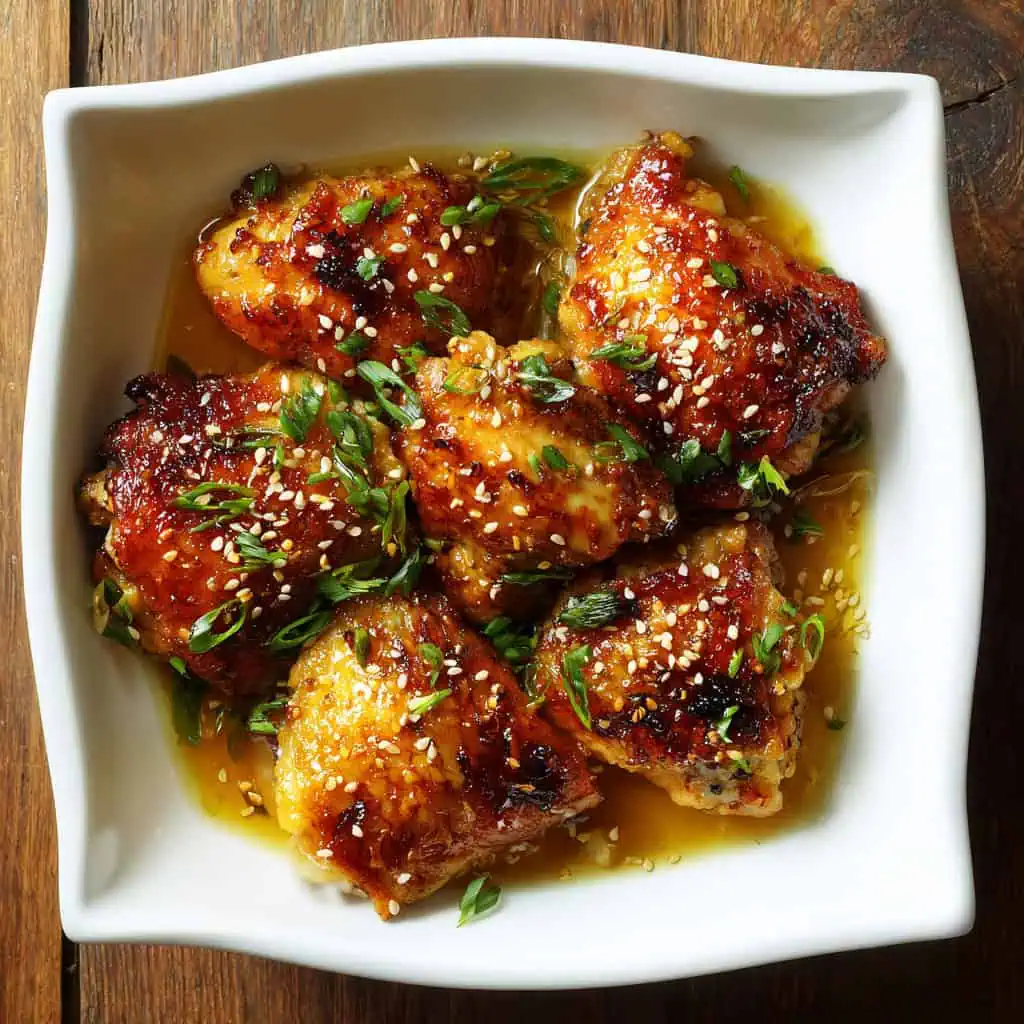
How To Make
- In a bowl, combine chicken cubes with soy sauce and Chinese cooking wine. Let this marinate in the refrigerator for 20 to 30 minutes to allow the flavors to penetrate the meat. After marinating, drain the chicken completely and discard the liquid for food safety.
- While the chicken marinates, prepare your coating by combining egg whites and cornstarch in a separate bowl. Whisk this mixture vigorously until it becomes frothy and well-blended. The frothy texture helps create that light, crispy coating we're after.
- Add the drained chicken to the egg white mixture and toss thoroughly to ensure every piece is completely coated. This coating will create the golden, crispy exterior when fried.
- Heat oil in your deep, heavy-bottomed pan over medium heat. The oil should be hot enough that a small piece of batter sizzles immediately when dropped in. Carefully add the coated chicken pieces to the oil, stirring gently to prevent them from sticking together.
- Deep-fry the chicken for 5 to 6 minutes, turning occasionally, until the pieces are golden brown and crispy. Don't overcrowd the pan as this will lower the oil temperature and result in soggy chicken.
- Using a slotted spoon, remove the fried chicken from the oil and place on a wire rack to drain excess oil. This step is crucial for maintaining crispiness.
- In a clean pan, heat about 1 tablespoon of oil over medium heat. Add the minced garlic and grated ginger, cooking until they become fragrant and slightly softened, about 1 minute.
- While the aromatics cook, combine calamansi juice, soy sauce, Chinese cooking wine, sesame oil, brown sugar, and red chili flakes in a bowl. Mix well to ensure the sugar begins to dissolve.
- Pour the sauce mixture into the pan with the garlic and ginger. Stir continuously as the sauce heats up and the sugar completely dissolves, creating a glossy, fragrant base.
- In a small bowl, whisk together cornstarch and water until completely smooth with no lumps. This slurry will thicken the sauce to the perfect consistency.
- Slowly pour the cornstarch slurry into the bubbling sauce while whisking constantly to prevent lumps from forming. Continue cooking for 1 to 2 minutes until the sauce thickens and coats the back of a spoon.
- Add the crispy chicken pieces to the thickened sauce and toss gently but thoroughly to coat every piece. The sauce should cling beautifully to the chicken without being too thick or too thin.
- Transfer to a serving platter and garnish with toasted sesame seeds and chopped green onions. Serve immediately while the chicken is still crispy and the sauce is warm.

Tips from Lola's Kitchen
- Always use fresh calamansi juice - bottled juice lacks the bright, floral notes that make this dish special
- Cut chicken into uniform 1-inch pieces for even cooking throughout
- Don't skip the marinating step - it makes the chicken more flavorful and tender
- Test oil temperature with a small piece of batter before frying all the chicken
- Work quickly when coating chicken with sauce to maintain crispiness
- Double-fry the chicken for extra crispiness if desired - fry once, drain, then fry again for 2 minutes
Substitutions
- Chicken thighs → Chicken breast (will be less juicy but still delicious)
- Calamansi juice → Half lime juice + half orange juice for similar flavor profile
- Chinese cooking wine → Dry sherry or rice wine vinegar
- Brown sugar → White sugar or coconut sugar
- Sesame oil → Extra virgin olive oil (different flavor but works)
- Cornstarch → All-purpose flour for coating (less crispy texture)
Troubleshooting
- Chicken not crispy → Oil temperature too low or overcrowded pan
- Sauce too thick → Add more water or calamansi juice gradually
- Sauce too thin → Mix more cornstarch with water and add slowly
- Chicken tough → Don't skip marinating time or overcooked the chicken
- Sauce lumpy → Whisk cornstarch slurry more thoroughly before adding
- Chicken greasy → Oil temperature too low or didn't drain properly on wire rack
Storage & Reheating
- Refrigeration → Store in airtight container for up to 3 days
- Freezing → Freeze for up to 2 months in freezer-safe containers
- Reheating → Use wide pan over low heat to maintain some crispiness
- Microwave option → Heat in 1-2 minute intervals, stirring between sessions
- Crispy tip → Reheat in air fryer at 350°F for 3-4 minutes for best texture
- Sauce separation → Stir well before reheating as sauce may separate when stored
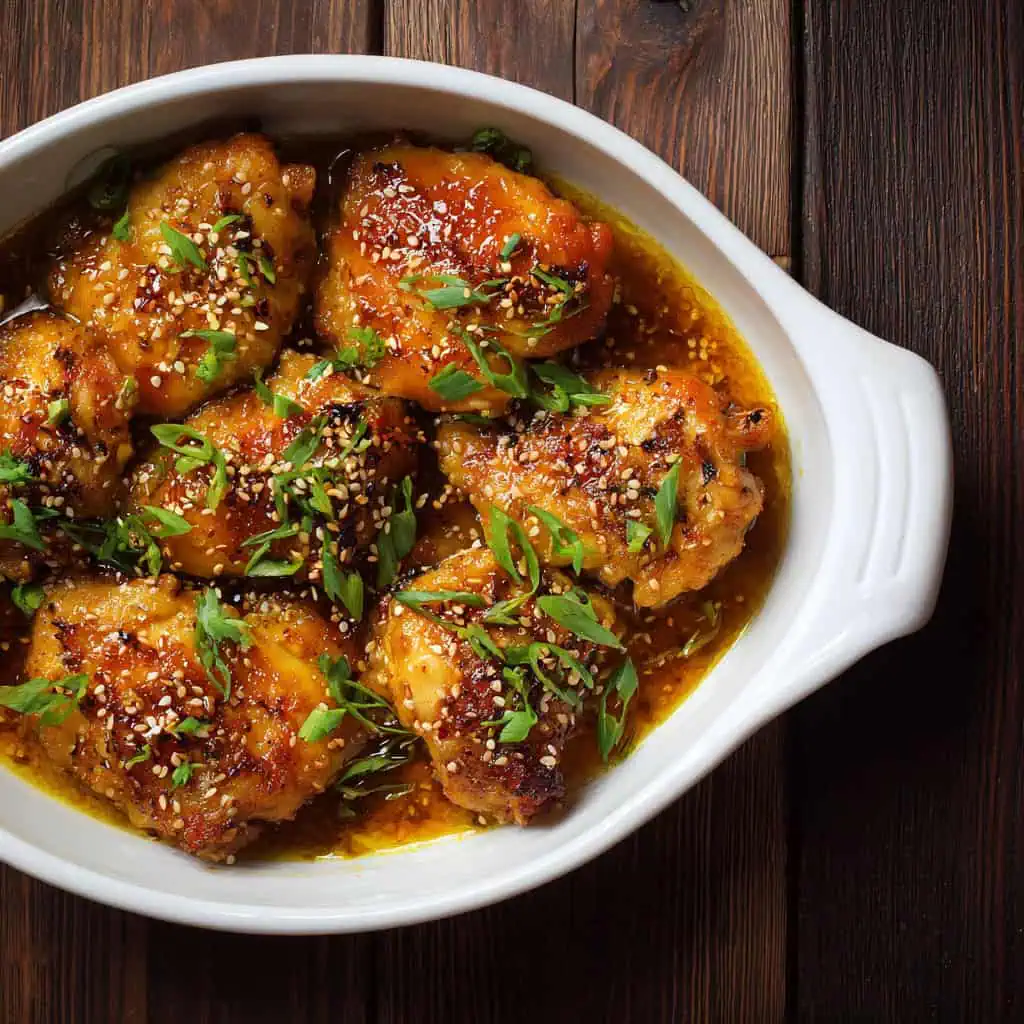
FAQ
Can I use frozen calamansi juice?
Yes, but fresh is always better for optimal flavor
What if I can't find calamansi?
Use 2 parts lime juice to 1 part orange juice as substitute
Can I bake instead of fry?
Yes, bake at 400°F for 20-25 minutes, turning once
How spicy is this dish?
Mildly spicy from chili flakes, adjust to taste
Can I make sauce ahead?
Yes, sauce keeps 3 days refrigerated and reheats well
What's the best oil for frying?
Canola or vegetable oil work best for high-heat frying
Related
Looking for other recipes like this? Try these:
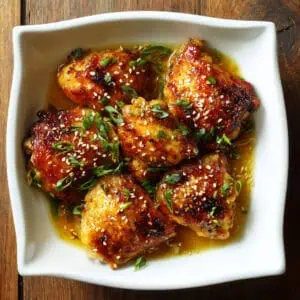
Calamansi Chicken (Filipino-Style Citrus Chicken)
Ingredients
- 1 pound boneless skinless chicken thighs cut into 1-inch cubes
- 2 tablespoons light soy sauce
- 1 tablespoon Chinese cooking wine
- 2 egg whites
- 1 tablespoon cornstarch
- Canola oil for deep frying
- Sesame seeds toasted
- Green onions chopped
For the Calamansi Sauce:
- ½ cup fresh calamansi juice
- 2 tablespoons light soy sauce
- 1 tablespoon Chinese cooking wine
- 1 teaspoon sesame oil
- ¼ cup brown sugar
- 2 cloves garlic peeled and finely minced
- 1 thumb-size ginger peeled and finely grated
- ½ teaspoon red chili flakes
- 1 tablespoon cornstarch
- ¼ cup water
Instructions
- In a bowl, combine chicken cubes with soy sauce and Chinese cooking wine. Let this marinate in the refrigerator for 20 to 30 minutes to allow the flavors to penetrate the meat. After marinating, drain the chicken completely and discard the liquid for food safety.
- While the chicken marinates, prepare your coating by combining egg whites and cornstarch in a separate bowl. Whisk this mixture vigorously until it becomes frothy and well-blended. The frothy texture helps create that light, crispy coating we're after.
- Add the drained chicken to the egg white mixture and toss thoroughly to ensure every piece is completely coated. This coating will create the golden, crispy exterior when fried.
- Heat oil in your deep, heavy-bottomed pan over medium heat. The oil should be hot enough that a small piece of batter sizzles immediately when dropped in. Carefully add the coated chicken pieces to the oil, stirring gently to prevent them from sticking together.
- Deep-fry the chicken for 5 to 6 minutes, turning occasionally, until the pieces are golden brown and crispy. Don't overcrowd the pan as this will lower the oil temperature and result in soggy chicken.
- Using a slotted spoon, remove the fried chicken from the oil and place on a wire rack to drain excess oil. This step is crucial for maintaining crispiness.
- In a clean pan, heat about 1 tablespoon of oil over medium heat. Add the minced garlic and grated ginger, cooking until they become fragrant and slightly softened, about 1 minute.
- While the aromatics cook, combine calamansi juice, soy sauce, Chinese cooking wine, sesame oil, brown sugar, and red chili flakes in a bowl. Mix well to ensure the sugar begins to dissolve.
- Pour the sauce mixture into the pan with the garlic and ginger. Stir continuously as the sauce heats up and the sugar completely dissolves, creating a glossy, fragrant base.
- In a small bowl, whisk together cornstarch and water until completely smooth with no lumps. This slurry will thicken the sauce to the perfect consistency.
- Slowly pour the cornstarch slurry into the bubbling sauce while whisking constantly to prevent lumps from forming. Continue cooking for 1 to 2 minutes until the sauce thickens and coats the back of a spoon.
- Add the crispy chicken pieces to the thickened sauce and toss gently but thoroughly to coat every piece. The sauce should cling beautifully to the chicken without being too thick or too thin.
- Transfer to a serving platter and garnish with toasted sesame seeds and chopped green onions. Serve immediately while the chicken is still crispy and the sauce is warm.
Tips from Lola's Kitchen
- Always use fresh calamansi juice - bottled juice lacks the bright, floral notes that make this dish special
- Cut chicken into uniform 1-inch pieces for even cooking throughout
- Don't skip the marinating step - it makes the chicken more flavorful and tender
- Test oil temperature with a small piece of batter before frying all the chicken
- Work quickly when coating chicken with sauce to maintain crispiness
- Double-fry the chicken for extra crispiness if desired - fry once, drain, then fry again for 2 minutes
The Story Behind Calamansi Chicken
Calamansi chicken represents the beautiful fusion of Filipino and Chinese culinary traditions that has shaped modern Asian-American cuisine. This dish takes inspiration from the beloved orange chicken that became a staple in Chinese-American restaurants across the United States in the 1980s. However, Filipino home cooks began adapting this popular takeout favorite by incorporating calamansi, a small citrus fruit that's deeply rooted in Filipino cooking.
The magic of calamansi lies in its unique flavor profile. Unlike regular oranges, calamansi offers a more complex taste that's both tart and slightly sweet, with floral notes that make it irreplaceable in Filipino cuisine. This tiny green-to-orange fruit has been cultivated in the Philippines for centuries and is often called the "golden lime" for its distinctive taste and aromatic qualities.
Filipino families living abroad began creating this fusion dish as a way to introduce their children to traditional Filipino flavors while still enjoying familiar comfort foods. The result is a perfect bridge between cultures, crispy fried chicken that kids love, elevated with the sophisticated citrus notes that adults appreciate. This evolution represents how immigrant communities adapt and improve upon popular dishes, creating something entirely new yet deeply rooted in tradition.
Today, calamansi chicken has become a beloved recipe in Filipino-American households and is gaining popularity among food enthusiasts who appreciate its fresh, bright flavor over the sometimes cloying sweetness of traditional orange chicken. It's a testament to how food culture evolves and how the best dishes often come from creative home cooks who aren't afraid to experiment with traditional recipes.
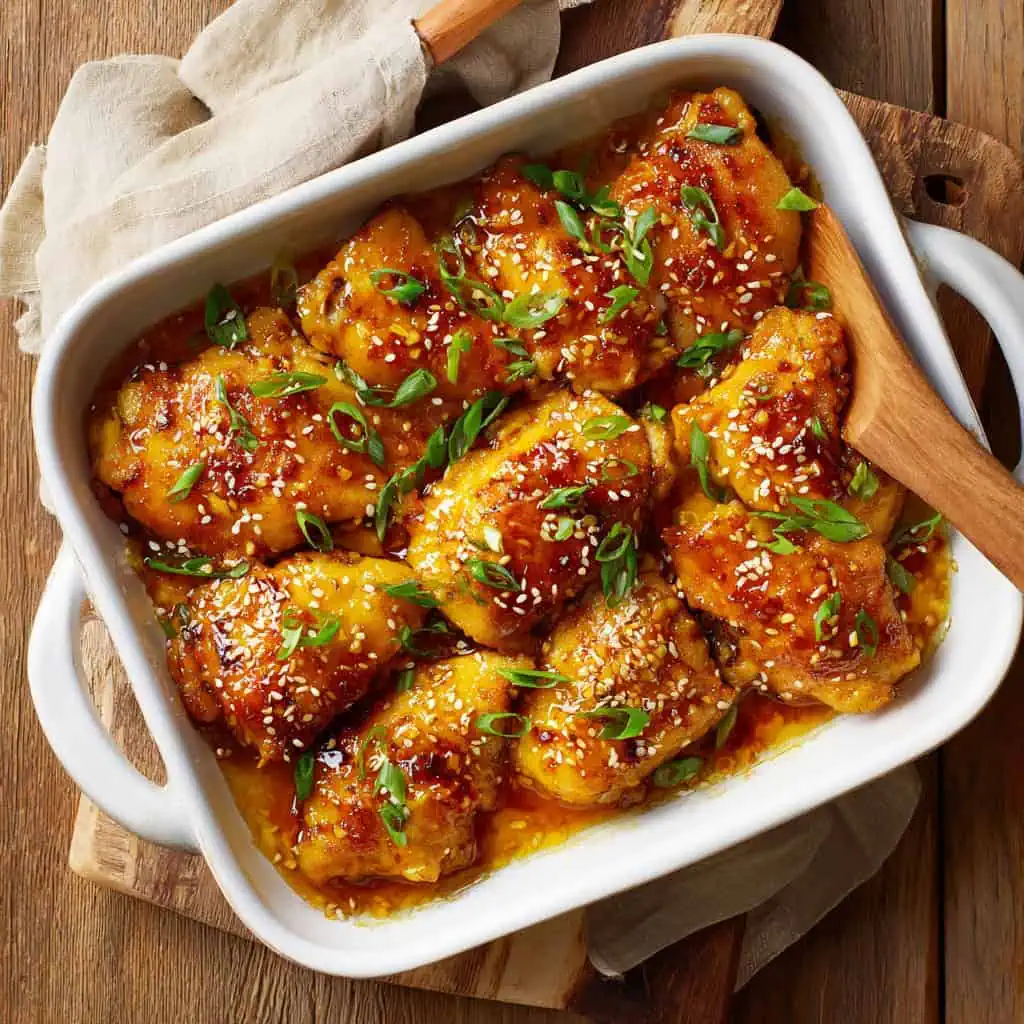

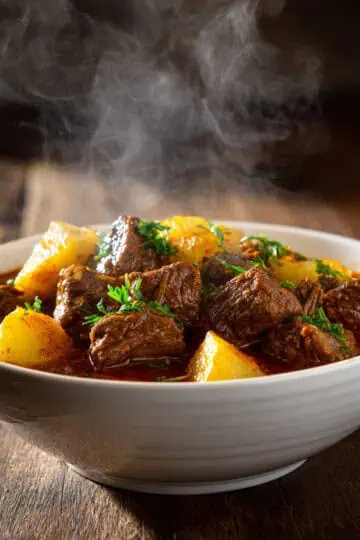

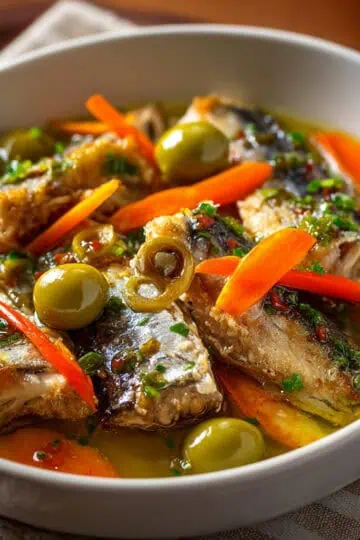
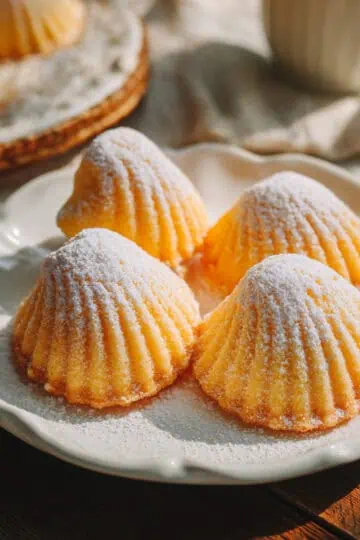
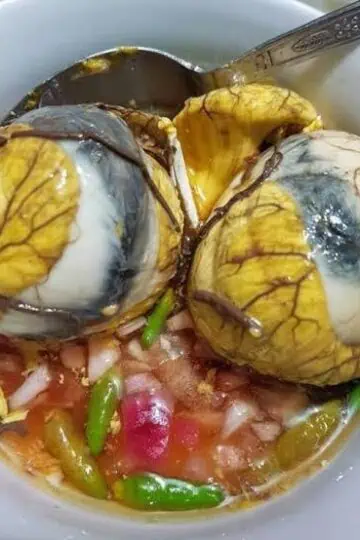
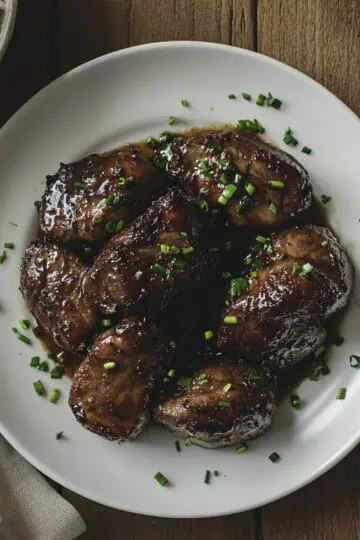
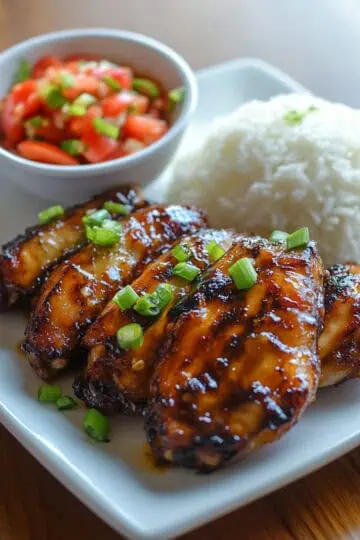

Comments
No Comments